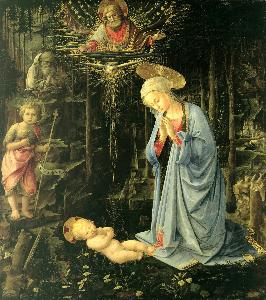Filippo Di Tommaso Lippi
Filippo Di Tommaso Lippi;Filippo Lippi
Place: Florence
Born: 1406
Death: 1469
Biography:
Early Life and Training
Filippo Di Tommaso Lippi, an Italian painter of the Quattrocento, was born in Florence in 1406 to a butcher family. Orphaned at two years old, he was sent to live with his aunt, Mona Lapaccia, who later placed him in the neighboring Carmelite convent when he was eight years old. This marked the beginning of his education and artistic journey.
Artistic Career
In 1420, Lippi was admitted to the novitiate of the Order of the Brothers of the Blessed Virgin Mary of Mount Carmel, taking religious vows in the Order the following year, at the age of sixteen. He was ordained as a priest in approximately 1425 and remained in residence at the priory until 1432. Giorgio Vasari, the first art historian of the Renaissance, writes that Lippi was inspired to become a painter by watching Masaccio at work in the Carmine church. Lippi's early work, notably the Tarquinia Madonna (Galleria Nazionale, Rome), shows the influence of Masaccio.
Notable Works and Pupils
* The Annunciation and The Seven Saints, commissioned by the Medici family * Coronation of the Virgin (1441), an altarpiece for the nuns of Sant'Ambrogio, featuring a half-length figure originally thought to be a self-portrait of Lippi * Notable pupils include Sandro Botticelli and Francesco di Pesello (called Pesellino)
Controversies and Later Life
Lippi's life was marked by controversies, including financial difficulties, lawsuits, and forgery. He was known to have escaped from the Medici family's imprisonment using a rope made of his sheets.
- View Filippo Di Tommaso Lippi's Artworks on Wikioo.org
- Read more about Filippo Lippi on Wikipedia
- Explore the Quattrocento art movement and its notable artists on Wikioo.org's Art Timeline
* Born: 1406, Florence * Ordained as a priest: approximately 1425 * Died: 8 October 1469


